Conservation Campus and Gardens
Campus is a Tool for Water Efficiency and Best Practices
Northern Water’s Conservation Campus and Gardens provides public education on various plants, turf and conversation techniques that can achieve landscape water savings. Guests to the gardens will discover efficient irrigation methods and see hundreds of plant varieties that thrive in Colorado’s semiarid climate. The campus’ goal is to create an understanding of a landscape’s value and its association with health, wellness, the environment and natural resources.
The vision for the gardens started long before they became a reality. Early on our program focused on agricultural water conservation and providing practical water conservation information to homeowners, industry and landscape professionals. The Conservation Gardens support that mission. When we moved to our current headquarters in Berthoud in 2002, planning began for the backyard gardens. The gardens opened in 2007.
The gardens include demonstrations of native and alternative grasses, irrigation technologies, soil preparation and a ColoradoScape (also known as xeriscape) plaza that highlights several Colorado-friendly landscaping themes. The demonstrations are a great resource for the public to study and implement in their personal landscapes.
Overall, the Conservation Gardens are designed to promote and demonstrate the 7 Principles of ColoradoScape (Xeriscape): planning and design, efficient irrigation, mulches, appropriate maintenance, soil improvements, zoning of plants and turf alternatives.
New demonstrations are also in the planning stages that will help chart a path for future water efficient landscapes to be mindful of our water supplies and how we can ensure they will be available for centuries to come.
A Move Toward a Conservation Campus
In recent years we’ve expanded our focus to take our practices and evaluations of landscape management and water use efficiency throughout our campus to provide additional demonstration examples.
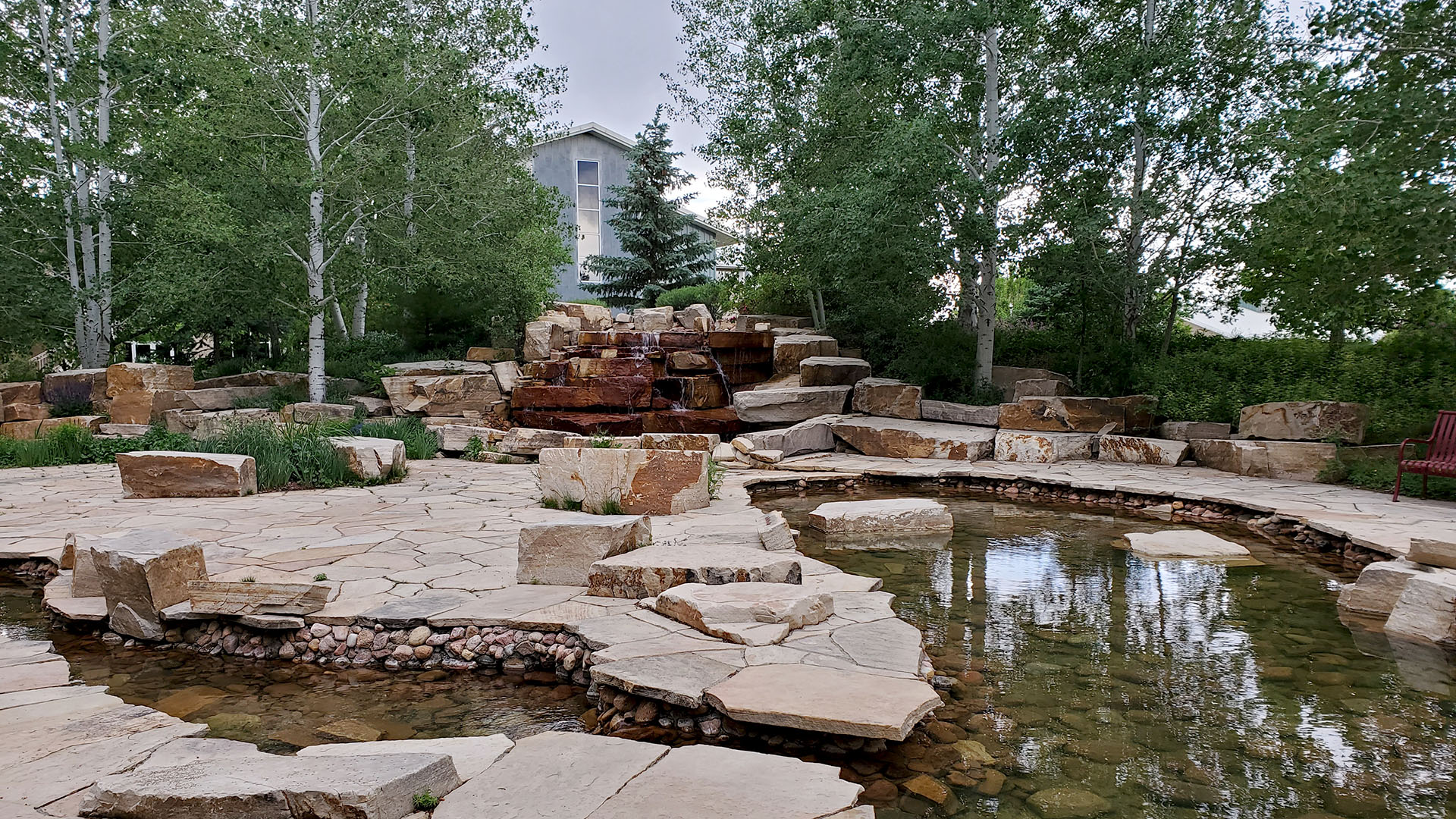
Interpretive Area
While simple in concept, the design of the Colorado-Big Thompson Project can be quite complex so Northern Water created a interpretive area in the backyard of the Berthoud headquarters. This small-scale replica includes a recirculating water feature with 13 reservoirs from the C-BT and Windy Gap projects, the Continental Divide and the Alva B. Adams Tunnel to give people a feel for how water is delivered.
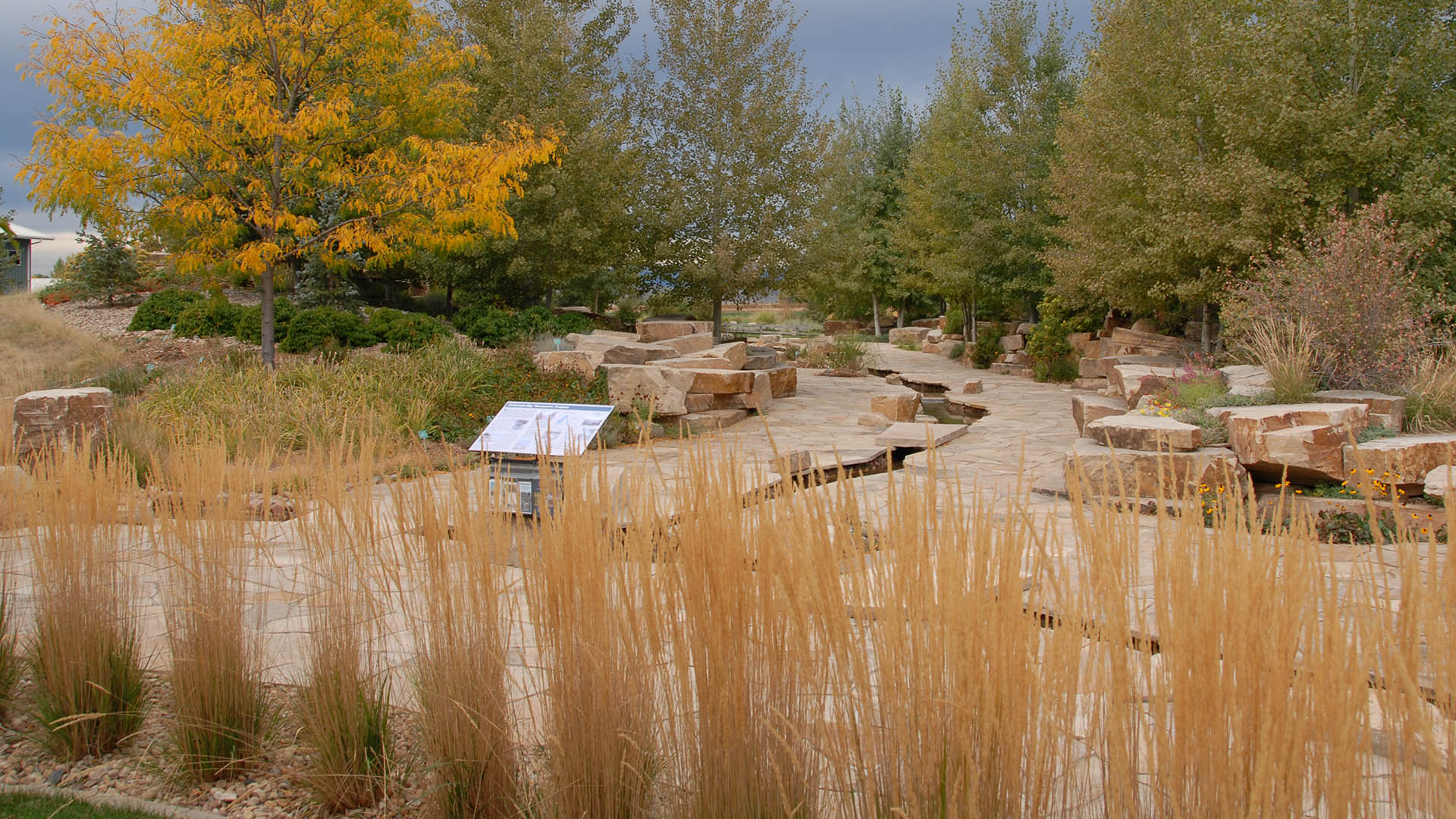
Native Grasses
Native grasses require less irrigation, mowing and chemical treatment. Colorado native grass species support and maintain the native ecosystem. The use of native species is beneficial because they are adapted to our region. They require less need for irrigation, mowing and chemical treatments, while also providing a beneficial habitat for a variety of pollinators, birds and other species.
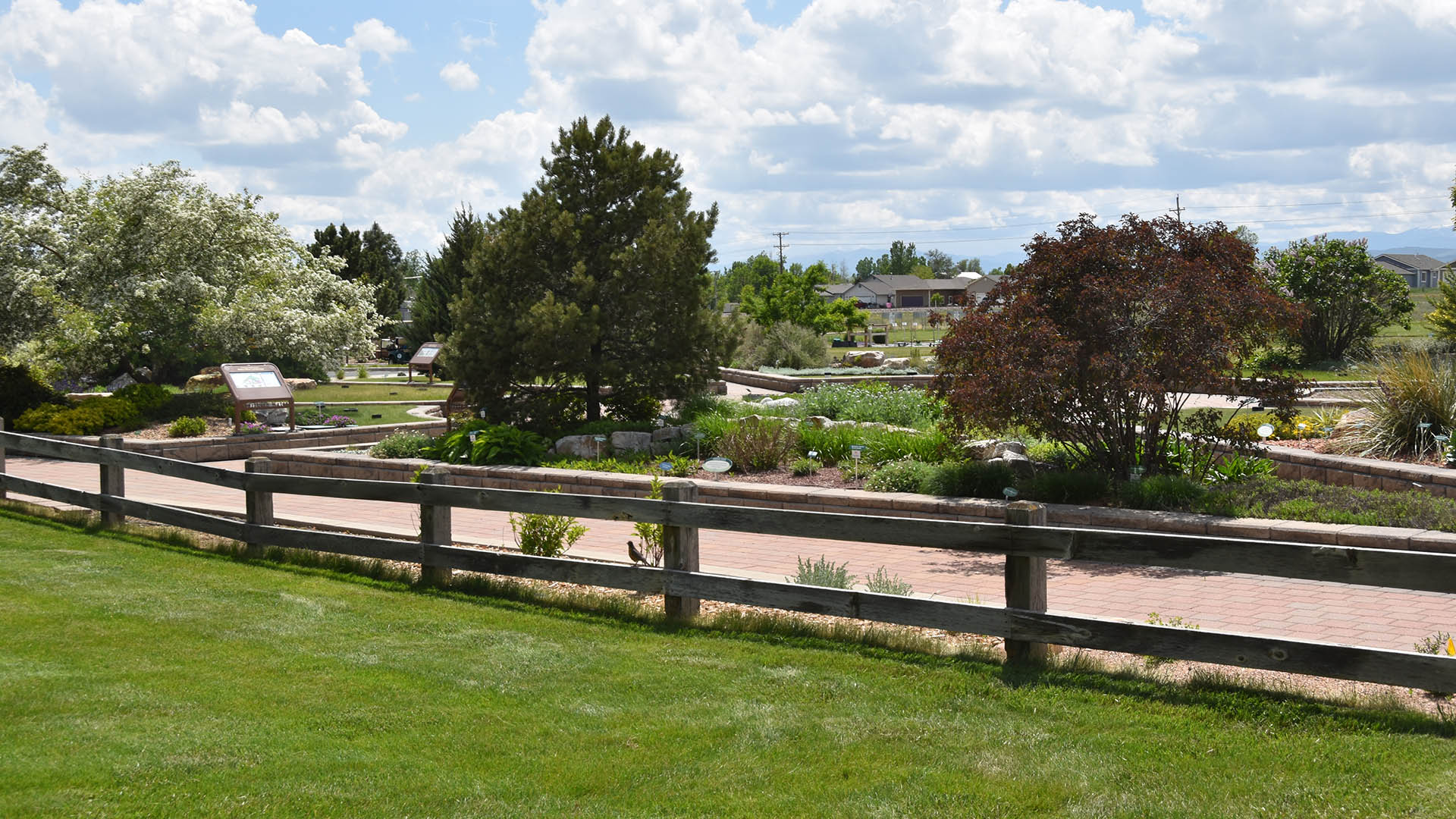
Trees
Northern Water has added numerous trees throughout the years to its Berthoud headquarters campus. From a distance they are beautiful, strong and resilient. Behind the scenes they are improving air quality, creating oxygen, cleaning water, providing habitat, cultivating health and wellness, increasing property value and reducing surface temperatures. Find our tree map on the Colorado Tree Coalition website.
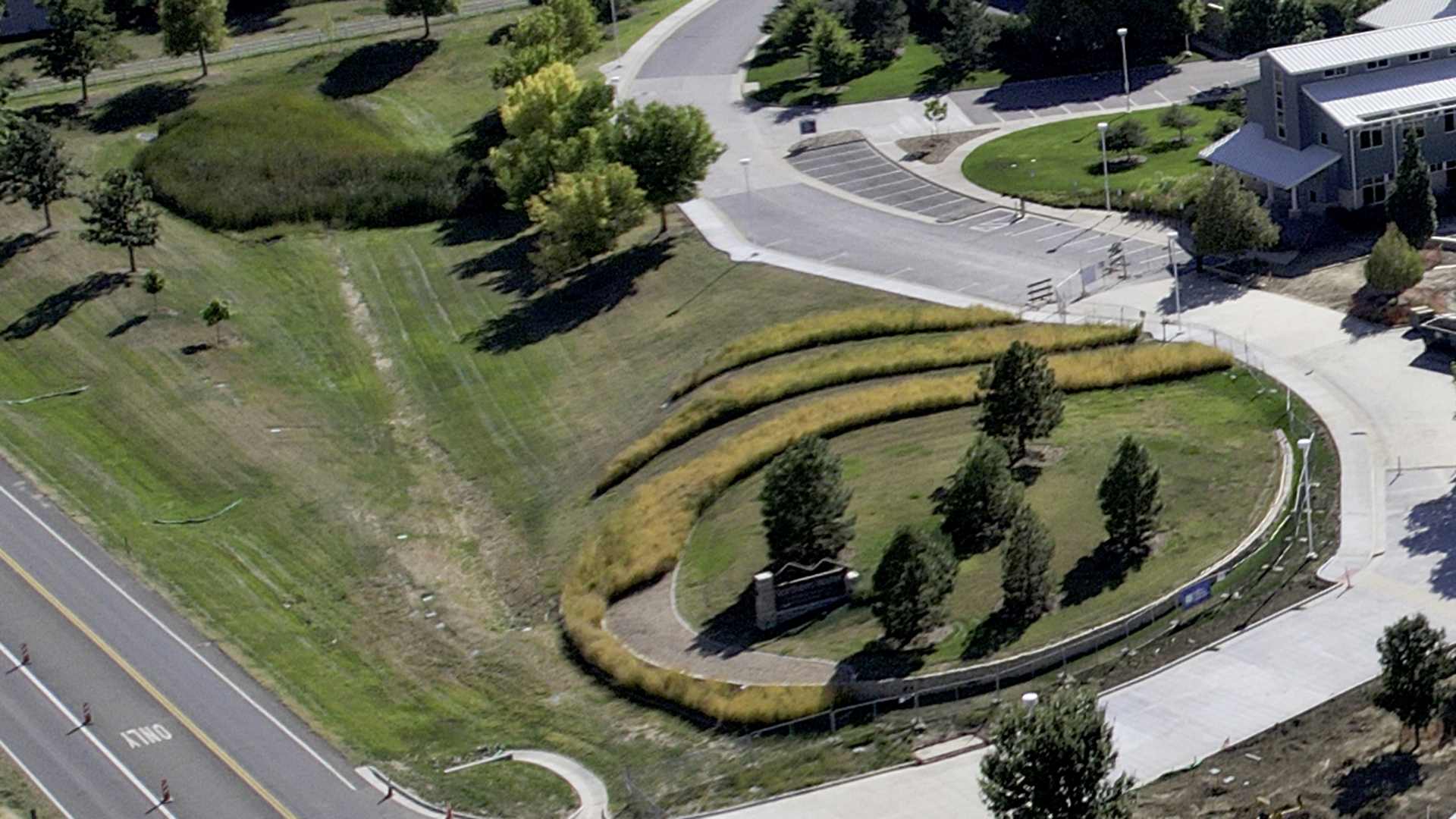
Stormwater Basins
On the Northern Water Berthoud and Willow Creek campuses, stormwater basins maximize surface area to naturally collect and filter nutrients and minerals. Our retention basin is designed to permanently maintain and control stormwater. These basins are surrounded by natural vegetation to improve bank stability and to assist with water filtration.
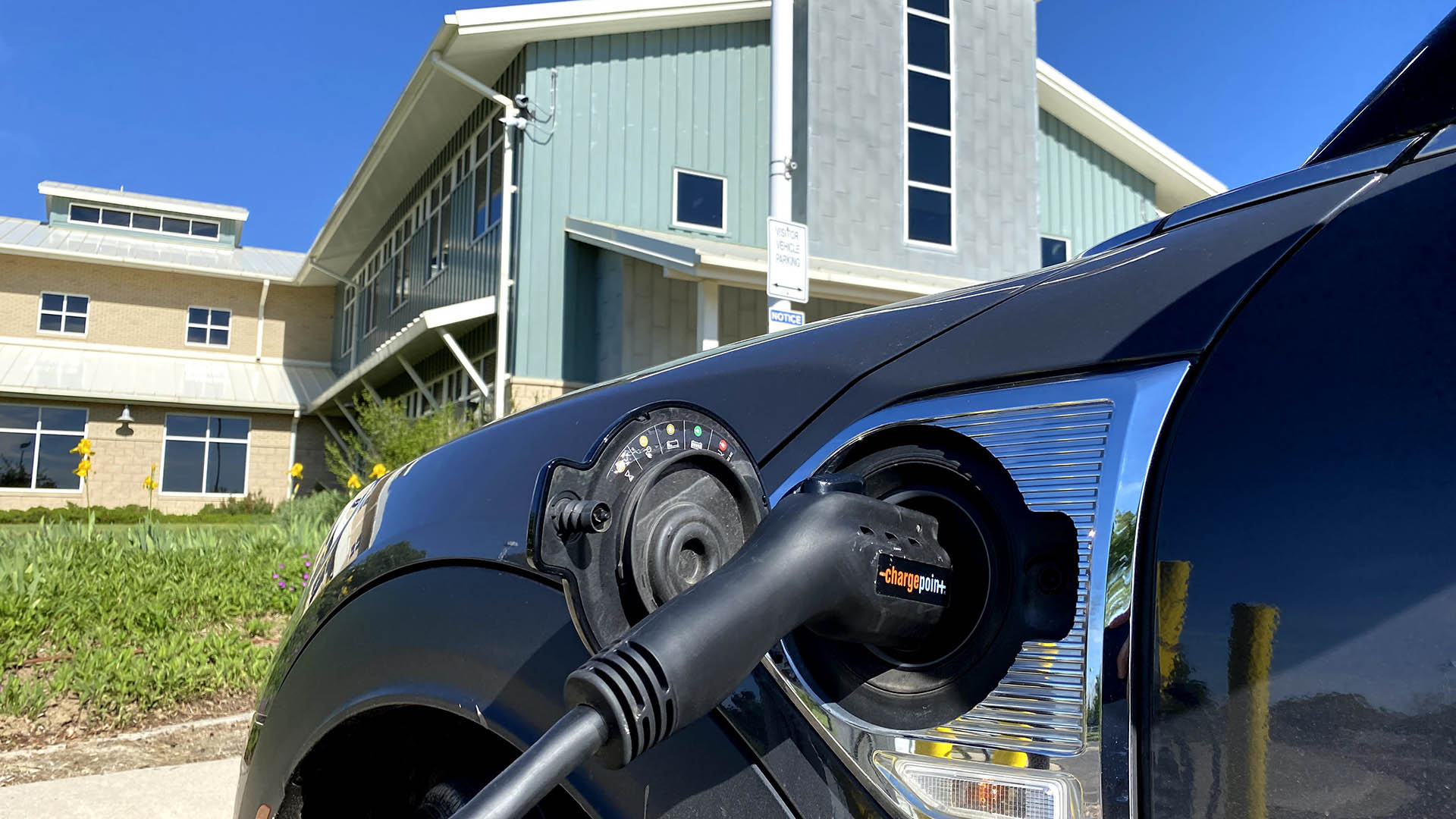
Electric Vehicle Chargers
Thanks to Charge Ahead Colorado, an initiative from the Colorado Energy Office, Northern Water received a grant to help fund the installation of an electric vehicle (EV) charging station. Northern Water also has additional chargers in the parking lot to the west that support our Conservation Campus. These Level 2 chargers have two charging ports per charger.

Indoor Features
In 2018, Northern Water began addressing efficiency opportunities within our building by retrofitting our restrooms with WaterSense-approved fixtures that will save us at least 20 percent on our restroom water use. A campus wide landscape irrigation audit identified opportunities to improve our irrigation efficiency and remove nonpractical turf areas.
Gardens are a Teaching Tool
The Conservation Gardens serve as a teaching tool for the public. We host technical tours for water professionals, landscapers, contractors, consultants, students and more.
We host a variety of events, classes and professional teaching opportunities in the gardens, and focus demonstrations on tips to save water through plant selection, irrigation maintenance and management.
Tour the Conservation Gardens and Campus
Visitors to the Conservation Gardens and the C-BT Interpretive Area are welcome to wander the gardens on their own and learn through the signage and brochures available. The gardens are open daily from sunrise to sunset.
Looking for more? We’d also be happy to take you on a tour. Please call 800-369-7246, email Lindsay Nerad or sign up for one of our monthly seasonal tours on our calendar.
Project Replica Displays Water Movement
As Colorado’s largest transmountain diversion, the Colorado-Big Thompson Project provides supplemental water for agricultural, municipal, domestic and industrial uses in Northeastern Colorado. Construction of this very large project began in 1938 and finally concluded in 1957. The project consists of six hydropower plants, three pumping plants, 12 reservoirs, 35 miles of tunnels, 95 miles of canals and 800 miles of transmission lines. The C-BT Project spans 150 miles east to west and 65 miles from north to south.
Northern Water created an interpretive area at its Berthoud headquarters in the backyard gardens for visitors unable to attend a tour or otherwise see C-BT facilities firsthand. The small-scale replica includes a recirculating water feature with features from both the C-BT and Windy Gap projects, the Continental Divide and the Alva B. Adams Tunnel. The interpretive area’s water feature operates from late April through early October, however the area is open year-round to the public during daylight hours.

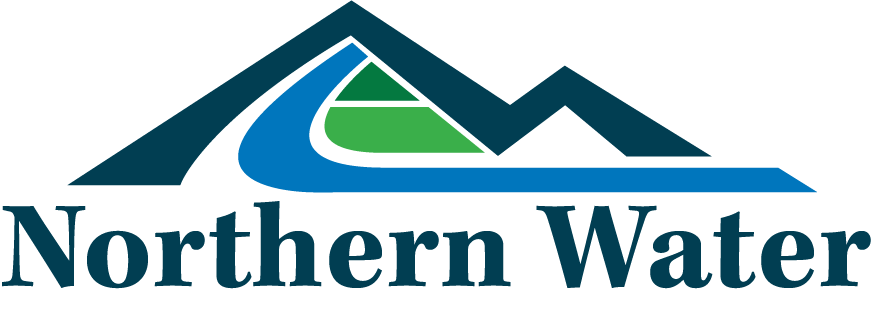










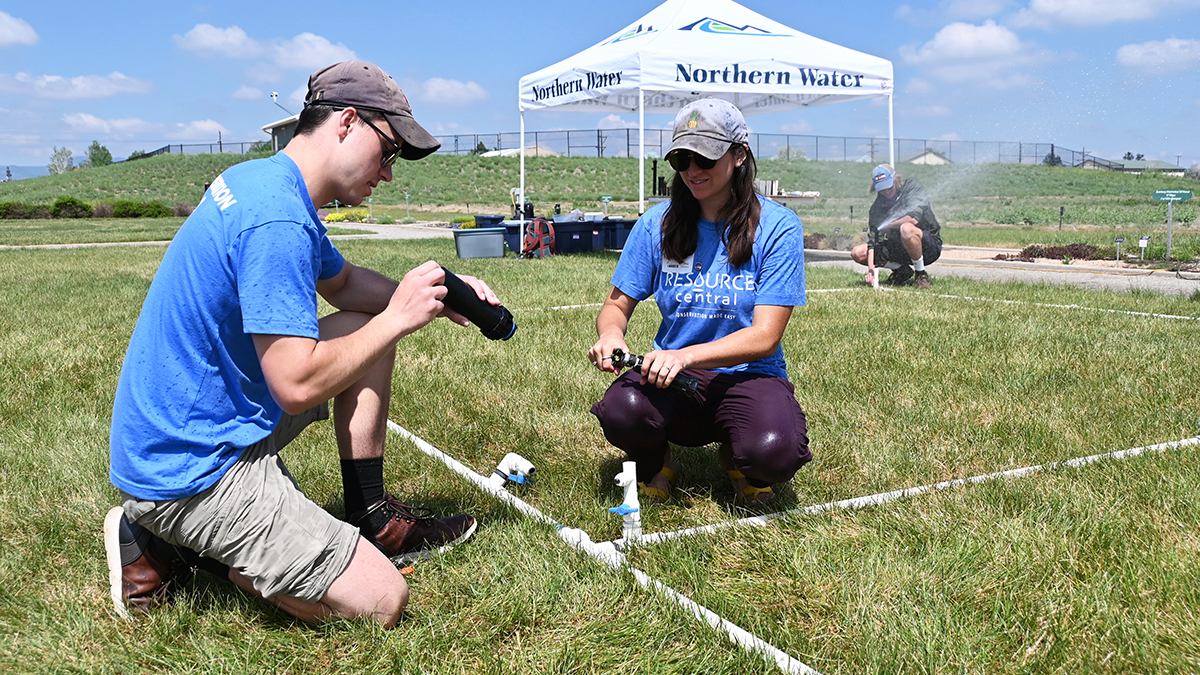-6.jpg?width=1200&height=675&ext=.jpg)

-1.jpg?width=1200&height=675&ext=.jpg)
-5.jpg?width=1200&height=675&ext=.jpg)
